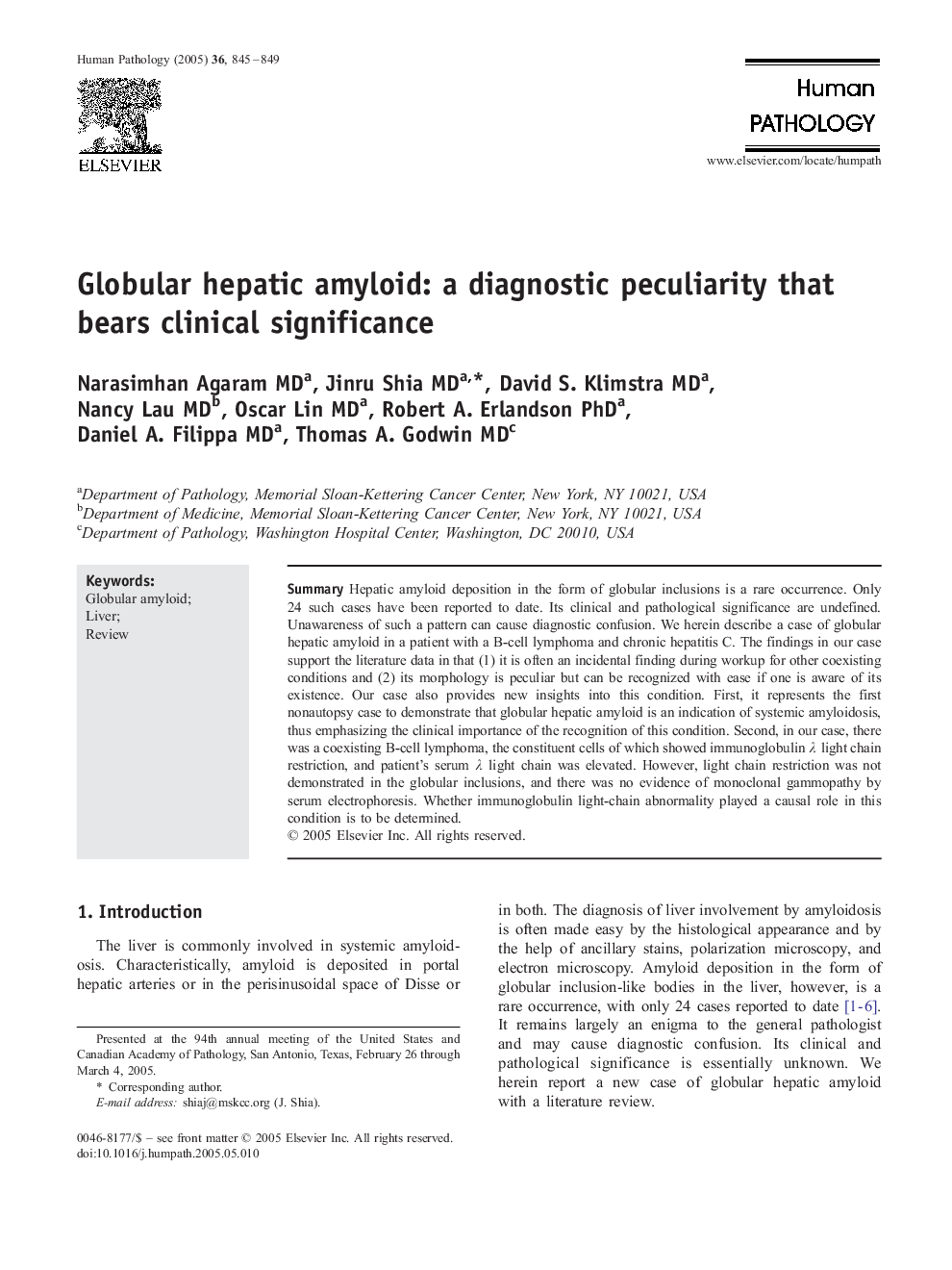| Article ID | Journal | Published Year | Pages | File Type |
|---|---|---|---|---|
| 9365394 | Human Pathology | 2005 | 5 Pages |
Abstract
Hepatic amyloid deposition in the form of globular inclusions is a rare occurrence. Only 24 such cases have been reported to date. Its clinical and pathological significance are undefined. Unawareness of such a pattern can cause diagnostic confusion. We herein describe a case of globular hepatic amyloid in a patient with a B-cell lymphoma and chronic hepatitis C. The findings in our case support the literature data in that (1) it is often an incidental finding during workup for other coexisting conditions and (2) its morphology is peculiar but can be recognized with ease if one is aware of its existence. Our case also provides new insights into this condition. First, it represents the first nonautopsy case to demonstrate that globular hepatic amyloid is an indication of systemic amyloidosis, thus emphasizing the clinical importance of the recognition of this condition. Second, in our case, there was a coexisting B-cell lymphoma, the constituent cells of which showed immunoglobulin λ light chain restriction, and patient's serum λ light chain was elevated. However, light chain restriction was not demonstrated in the globular inclusions, and there was no evidence of monoclonal gammopathy by serum electrophoresis. Whether immunoglobulin light-chain abnormality played a causal role in this condition is to be determined.
Related Topics
Health Sciences
Medicine and Dentistry
Pathology and Medical Technology
Authors
Narasimhan MD, Jinru MD, David S. MD, Nancy MD, Oscar MD, Robert A. PhD, Daniel A. MD, Thomas A. MD,
